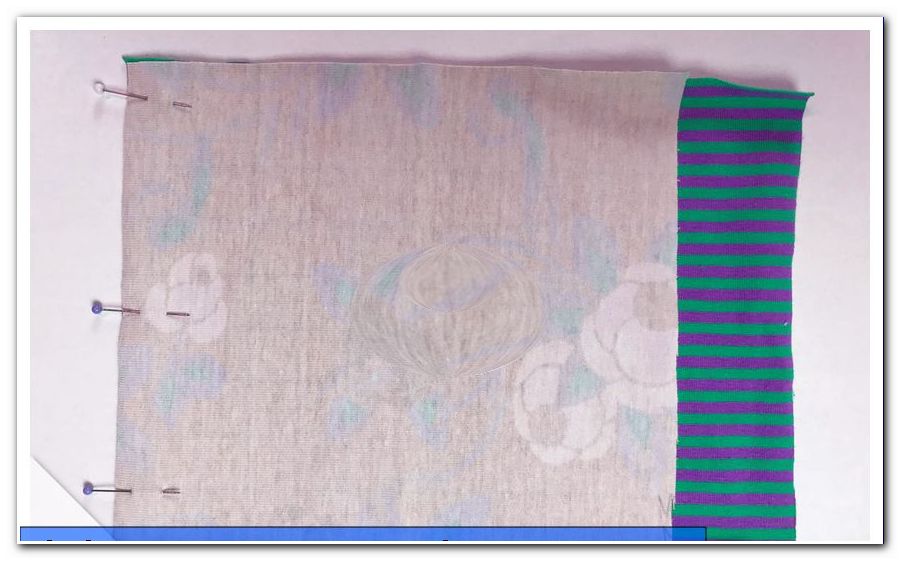Remove glued carpet & carpet glue yourself

- method
- Taped carpet
- Fully bonded floor
- Glued carpet on concrete and screed
- Use home remedies
You have bought a new floor covering and now you have to remove the old carpet ">
Tips for removing carpet are dependent on the existing substrate. Concrete floor is more resistant, making it easier to work. Lacquered floors, on the other hand, require a particularly cautious method of operation and careful handling. Since many carpet adhesives are a particularly adhesive bond, removing the remains often takes a long time and therefore requires patience. In any case, you must first remove the carpet and try to remove as much glue as possible. Then you can make a mechanical, electrical or chemical removal of the adhesive remnants.
Required materials:
- big garbage bags for the carpet
- box cutter
- spatula
- Screwdrivers with screwed carpet rails
method
To be able to remove the carpet, you must first clear the room as much as possible. If this is not possible, then move the furniture to one half of the room and work in two steps. Once you have removed the flooring in one side of the room and removed any residue, you can move the furnishings to the other side and continue working.
Tip: Carpeting can be cut with special carpet knives. Pay attention to quality and the widest possible blade to work effectively and safely.

Now remove the carpet strips on the sides. These can either be nailed, screwed or fastened with clips.
Tip: If the strips are nailed, then a spatula helps you to detach. Slide the auxiliary device behind the bar and push it slightly forward so that the nail releases from the wall.
Taped carpet
There are different ways to attach the carpet. One possibility is to use adhesive tapes. These can usually be loosened with solvent from the ground, so that the carpet can then be removed. Particularly stubborn double-sided adhesive tape is then processed with a spatula so that it can also be completely removed. It is important to take care not to damage the surface.
Fully bonded floor
- The carpet is laid with water-soluble glue
- The carpet is laid with water-insoluble adhesive
How do I test which glue was used ">
Step 1: Moisten a carpet corner with warm water.
Step 2: Wait around one to two hours. If the carpet has detached at this point at this point, then it is water-soluble glue. Otherwise it was fixed with water-insoluble glue or synthetic resin.
Remove water-soluble glue
This case is the simpler of the two. For example, use a watering can and moisten the flooring. Then you can easily remove and remove the carpet.
Water-insoluble glue
The carpet must first be removed. Start at one corner of the room and tear out the flooring. Cut it into 30- to 50-centimeter-wide strips as you work, so you can work better. 
How can I remove glue residue ">
After ripping out the carpet and removing most of the remnants of the adhesive, glue residue may still remain. However, these must be completely removed before laying the new floor.
Working with the spatula
A spatula often helps to loosen the glue. Especially with wooden floors, this approach is effective. Concrete floors are more robust, so you can also work with grinders here. If the adhesive residue can not be removed when dry, soak it with water and a little soap for about 1 hour. For this, mix the water with dish soap and coat the carpet. Subsequently, the remains should be easier to work with the spatula. The advantage here is the low cost, but it takes a relatively long time to remove the adhesive residue in a larger room piece by piece by hand.

Insert the stripper
If the carpet is not so easy to demolish or remains of glue remain, then a stripper can be a great help here. This is a small device, which can often be borrowed in the hardware store at low cost. At the front of the machine there is a blade that separates the carpet from the floor. Professional devices produce more than 1 kilowatt, but less powerful devices are also suitable for small rooms.
Tip: Cut the rug to be detached into strips that are smaller than the stripper's blade. This achieves an effective way of working. First put the stripper on a carpet seam, for example on the door.
The special feature of the stripper is that it can also be used on carpets with felt backs or fleece backs. These variants are otherwise difficult to replace. To remove them with a stripper, you must use a special attachment for the device. It is a serrated knife, which was designed for these special carpet variants. For larger areas, larger professional equipment is offered that weighs up to 50 kilograms and can be guided quickly and effectively through the room.
Safety measures
When working with a stripper you should wear a mask and an earmuff, as it can both cause dust and a large volume development.
Glued carpet on concrete and screed
Hot air
Heated adhesive residues are easier to remove than cold ones. Therefore, you can heat the remains and then work with a spatula. Use a hair dryer and keep it at one of the edges. As soon as the first pieces begin to peel off, remove them with the spatula. Now work piece by piece through the room. 
Tip: If the carpet itself is difficult to remove, lift it up a little and heat the adhesive with the hair dryer to work on tight spots.
A major disadvantage of this approach is that heating takes some time and is therefore a tedious task. However, if only a few residues of adhesive remain, then this is a good way to solve the remains with simple means and low cost.
Tip: Since you hold the hair dryer relatively close to the carpet, make sure that the device does not overheat. To be on the safe side, you should use a low priced model, as this can limit the cost of dropping a defect.
carpet remover
The specialist retailers offer special carpet removers, with which you can also remove remnants from the floor. Pay close attention to the included instructions and then ventilate the room sufficiently. Because the remedies work fast, they work faster than warm air.
grinders
In the hardware store you have the choice of various sanding machines, which are also suitable for adhesive remnants. They are offered here under the name Betonfräse, renovation router or facade cutter and can often be rented. Bonded carpet can thus be processed quickly and effectively.
Tips:
- use the star mill set and definitely not the diamond disc.
- Grinders can be combined with a vacuum cleaner and absorb the resulting dirt immediately.
- Due to the noise, it is necessary that you wear earmuffs.
- A mouthguard prevents you from inhaling dust.
Use home remedies
 Especially on painted stairs remain after removal from the carpet stubborn remains. These look ugly and prevent the new pads from sticking to the steps. However, it is important that the paint is not damaged. Therefore, before applying the home remedy, test at a small point on the edge whether the lacquer is attacked or not. Possible home remedies for the removal of the remains are:
Especially on painted stairs remain after removal from the carpet stubborn remains. These look ugly and prevent the new pads from sticking to the steps. However, it is important that the paint is not damaged. Therefore, before applying the home remedy, test at a small point on the edge whether the lacquer is attacked or not. Possible home remedies for the removal of the remains are:
- brake cleaner
- alcohol
- nail polish remover
Attacked paint
Already by the adhesive it can come with lacquered wood to damages. Therefore, it is often necessary after the removal of the carpet to post-treat the floor. Adhesive remnants can also be very persistent, which can cause further damage when peeling off. Tiles or other surfaces are less sensitive.
Tips for quick readers
- water-soluble glue: moisten
- Insert grinder with star cutter attachment
- Use handstrippers for smaller areas
- Use a spatula to peel off
- Soak the adhesive residue with detergent and water
- use chemical carpet remover
- Home remedies: Alcohol, nail polish remover, acetone - use with care
- Tear off carpet in strips from the floor
- first remove carpet strips




